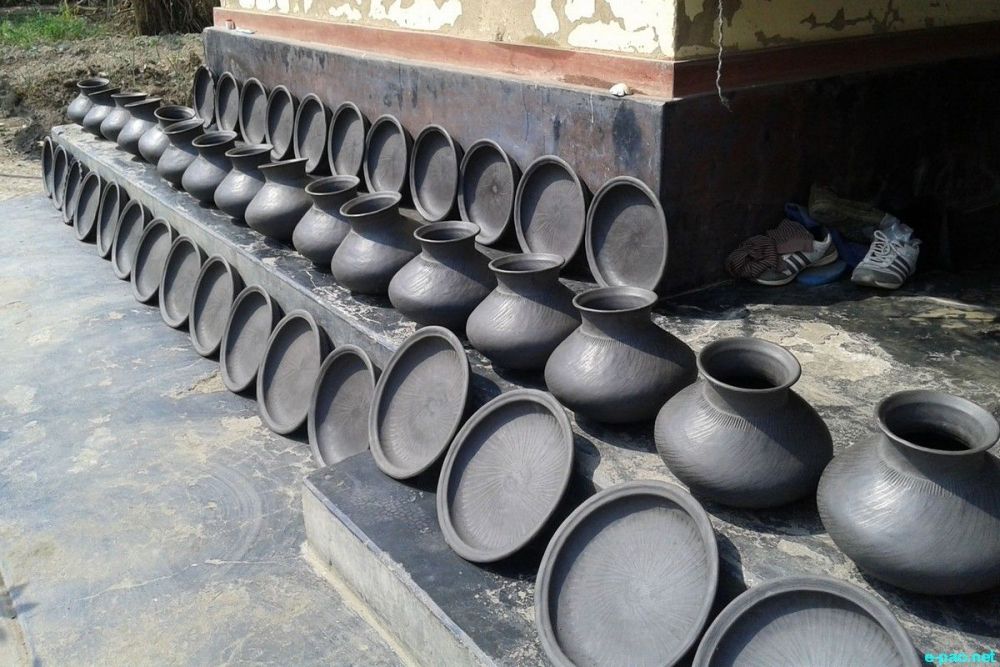

The quaint village of Longpi, located in the Ukhrul district of Manipur, India, is renowned for its age-old tradition of pottery. Longpi Pottery or Longpi Ham is a unique art form that has been preserved and passed down through generations, and it plays a significant role in the cultural and tourism history of this region.
Longpi's tryst with pottery dates back to ancient times when the art was practiced by the local Tangkhul Naga tribe. The skill was traditionally performed by the women of the village, and the pots were originally created for utilitarian purposes like cooking and storing water. However, with changing times, Longpi pottery has gained immense popularity both nationally and internationally.
The distinctive black pottery is handcrafted without the use of a potter’s wheel. Craftsmen mold the items with their hands from a mixture of black serpentinite stone and weathered rocks, which are unique to the Longpi area. The products are polished, decorated with cane, and then fired in a bonfire, which gives them their characteristic black hue.
In the past, Longpi was a hidden gem known only to the local tribes and a few curious travelers. Tourism in the region started to take stride as the popularity of Longpi’s unique pottery style grew. Artisans began showcasing their work in local fairs and markets, gradually earning the attention of international tourists and connoisseurs of handicrafts.
Government and non-governmental organizations have also stepped in to promote Longpi pottery by organizing workshops and exhibitions. These events serve to introduce the art form to a broader audience and help sustain the livelihood of village artisans.
Sustainable and experiential travel is the latest trend in tourism, and Longpi is perfectly poised to offer such an experience. Visitors are increasingly interested in authentic, hands-on experiences that allow them to understand local culture and practices. Longpi Pottery Village attracts tourists who are keen to learn about the traditional pottery-making process and to engage with the community directly.
Tourists visiting Longpi can watch the complete process of pottery-making, from kneading the clay mixture to firing the pots in an open bonfire. The village's tourism experience is enhanced by the serene and lush green surroundings, characteristic of the hilly landscape of Manipur.
The influx of tourists has had a positive impact on Longpi, leading to economic benefits and increased recognition for the artisans. With online marketplaces and government-sponsored platforms, the pottery is now accessible to a global audience. This has provided the artisans with the necessary motivation and means to continue and preserve their cultural heritage.
Longpi Pottery Village stands as a testament to the rich cultural tapestry of Manipur. It showcases how a traditional skill can evolve into a significant tourist attraction, bringing positive change and prosperity to a rural community. For the discerning traveler, a visit to this village isn't just about acquiring a piece of pottery, it's about experiencing the essence of a place through its art and the stories of the people who create it.